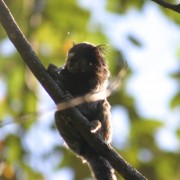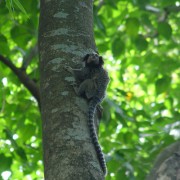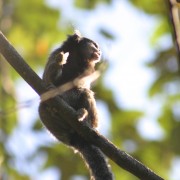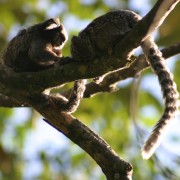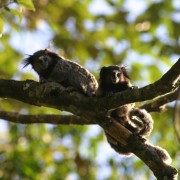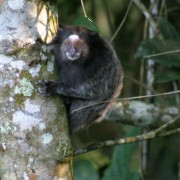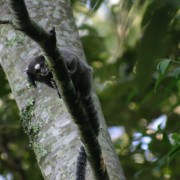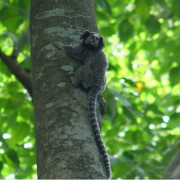Biodiversity
< Back
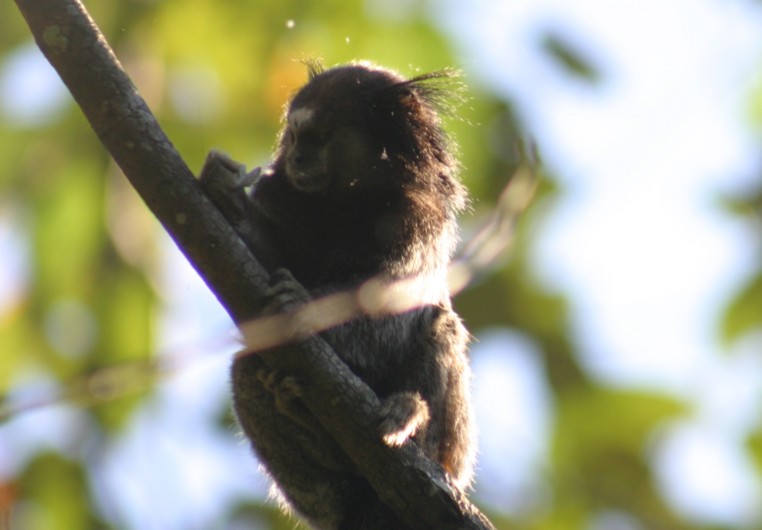
 Black Tufted-Ear Marmoset
Callithrix penicillata | É. Geoffroy, 1812
Black Tufted-Ear Marmoset
Callithrix penicillata | É. Geoffroy, 1812

PHOTO: Property of Native / Embrapa
Characteristics: This marmoset has a median white spot on its forehead. It has long, black preauricular tufts. Its overall coat is gray, and its tail has black and gray cross bands on it. Its back has a grooved pattern, its hands and feet are reddish-brown and grayish-brown, and its thighs light gray to light brown.
Distribution: It occurs in areas of the central Brazilian Savanna, being found in the states of Bahia, Minas Gerais, Goiás, Piauí, Maranhão, and northern São Paulo, to the north of the Tietê Piracicaba rivers.
Habitat: Semi-deciduous forests, secondary riparian forests and drier regions, such as the savanna.
Habits: Always seen in groups. Their main activity, i.e., removing parasites from each other's fur, is an affective way of bonding with the group.
Diet: They feed small invertebrates, ants, termites, fruit, flowers, nectar, and tree sap and resins. Jerivá, moriche palm fruit, and magnolia fruit.
Breeding: They have two complete gestations during the year, in which only a dominant female can procreate, while the remaining ones are physiologically inhibited from this. After 150 days of gestation, two offspring are born and breastfed for 6 months. They reach sexual maturity after a year and a half.
In the UFRA area: Spotted in Restored Native Forests.




